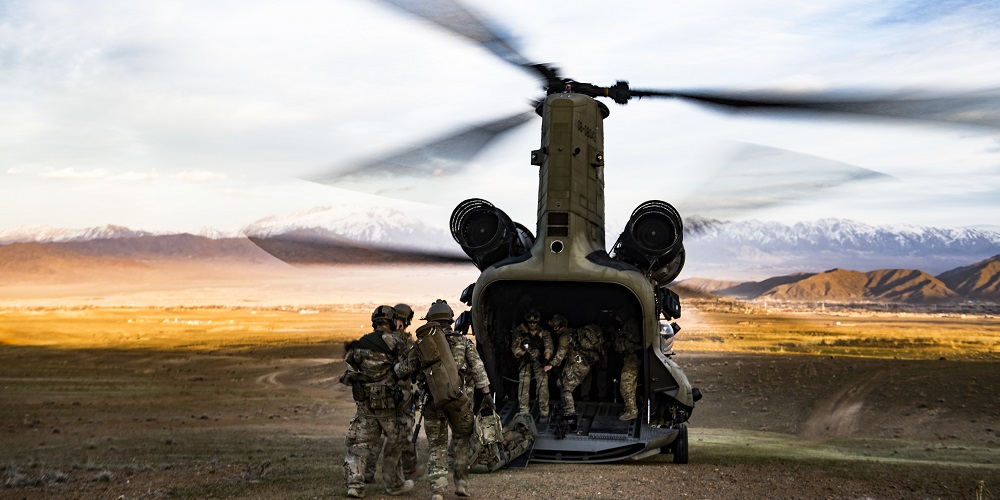

Beloved leaders: Much has transpired since last week’s column about President Donald Trump’s apparent decision to withdraw all U.S. troops from Afghanistan by Christmas.
Much like the president’s repeated tweets promising to pull all U.S. troops from Syria, Trump’s most recent comments about the Afghanistan withdrawal do not mark the end of the military’s involvement in a Post 9/11 war.
Rather, Trump’s tweet is more like the opening of a Coen brothers’ movie where our hero finds a suitcase full of money and decides to keep it – and from that moment on, all of his plans go terribly wrong.
Perhaps it’s fitting that the White House and the Pentagon cannot come up with a coherent narrative for the way forward in Afghanistan. Military leaders have at least twice applied the Jedi mind trick to get Trump to keep U.S. troops in Syria and they might get their way this time as well.
Let’s review: The United States has agreed to withdraw all of its troops from Afghanistan in April 2021 if the Taliban fights terrorist groups and meets other conditions. The U.S. military should have about 4,500 troops in Afghanistan by November. The Defense Department has not publicly announced any further troop reductions.
On Oct. 7, National Security Advisor Robert O’Brien announced the U.S. military would draw down to roughly 2,500 troops in Afghanistan next year. His comments contradicted repeated statements by defense officials that the military would only go lower than 4,500 troops in Afghanistan if conditions on the ground permitted doing so – and right now, they don’t. (An Oct. 4 statement from an Afghan rights group announced that 533 people had been killed and 412 injured in targeted assassinations during the first half of 2020.)
Not long after O’Brien’s comments were reported by Reuters, Trump tweeted that all U.S. troops in Afghanistan “should” be home by Christmas. While the president has issued orders by tweet before – such as when he had Navy SEAL Chief Eddie Gallagher released from pretrial confinement – it was not immediately clear if Trump’s pronouncement on the Afghanistan drawdown was a firm deadline or wishful thinking.
Then on Oct. 11, Army Gen. Mark Milley, chairman of the Joint Chiefs of Staff, indicated there could be some daylight between the Pentagon and White House on the Afghanistan withdrawal when he told National Public Radio that the U.S. government’s original plan to only go below 4,500 troops based on conditions on the ground was still in effect.
Milley did not contradict Trump – which would have been a maneuver equally as suicidal as Pickett’s Charge – but he did take a swipe at O’Brien.
“I think that Robert O’Brien or anyone else can speculate as they see fit,” Milley told NPR reporter Tom Bowman. “I’m not going to engage in speculation. I’m going to engage in the rigorous analysis of the situation based on the conditions and the plans that I am aware of and my conversations with the president.”
If all of this confuses you, buckle your chin strap because things are about to get even murkier.
On Oct. 14, NBC reporters Courtney Kube and Carol E. Lee revealed that Trump had agreed to draw down to between 2,500 and 3,000 troops in Afghanistan, but his advisors had recommended against a total pullout by the end of the year.
“I don’t think there’s anyone who believes we’ll be at zero by the end of the year,” an unnamed senior administration official told NBC.
Trump could announce the additional troop reductions during a major foreign policy speech before the Nov. 3 elections, according to NBC. The National Security Council did not provide a comment for this story.
On Oct. 16, O’Brien seemed to confirm that the U.S. military would have a smaller presence in Afghanistan at the start of next year.
“There’d be nothing greater than to have our troops home by Christmas,” O’Brien reportedly said at an online Aspen Institute event. “But right now we’re on a path with our European allies … that looks like about 4,500 this fall and a small number in January and February, but if the conditions permit it, we’d love to get people out earlier.”
Without mentioning Milley by name, O’Brien also took issue with the general’s comments to NPR, saying he “wasn’t speculating” when he announced that 2,500 U.S. troops would be in Afghanistan early next year.
With the White House and Pentagon sniping at each other, it would be nice to hear what Defense Secretary Mark Esper has to say on the plan for Afghanistan, but Esper hasn’t answered reporters’ questions on the record since a July 29 news conference about troop reductions in Germany.
The Pentagon referred Task & Purpose to the White House about this issue.
After this story was first published, a Taliban spokesman told Task & Purpose on Oct. 17 that the U.S government had not provided the group with any updates about the planned troop withdrawal from Afghanistan.
I wish I could provide some greater clarity about whether or not the U.S. military is leaving Afghanistan this year. The troops serving there and their families certainly deserve answers that U.S. government officials are incapable of providing.
What this latest example of government ineptitude serves to reinforce an axiom about the U.S. military: American wars are never over by Christmas.
Not getting the Pentagon Run-Down? Sign up here!
Jeff Schogol covers the Pentagon for Task & Purpose. He has covered the military for 15 years and embedded with U.S. troops in Iraq and Haiti. Prior to joining T&P, he covered the Marine Corps and Air Force at Military Times. Comments or thoughts to share? Send them to Jeff Schogol via email at schogol@taskandpurpose.com or direct message @JeffSchogol on Twitter.
